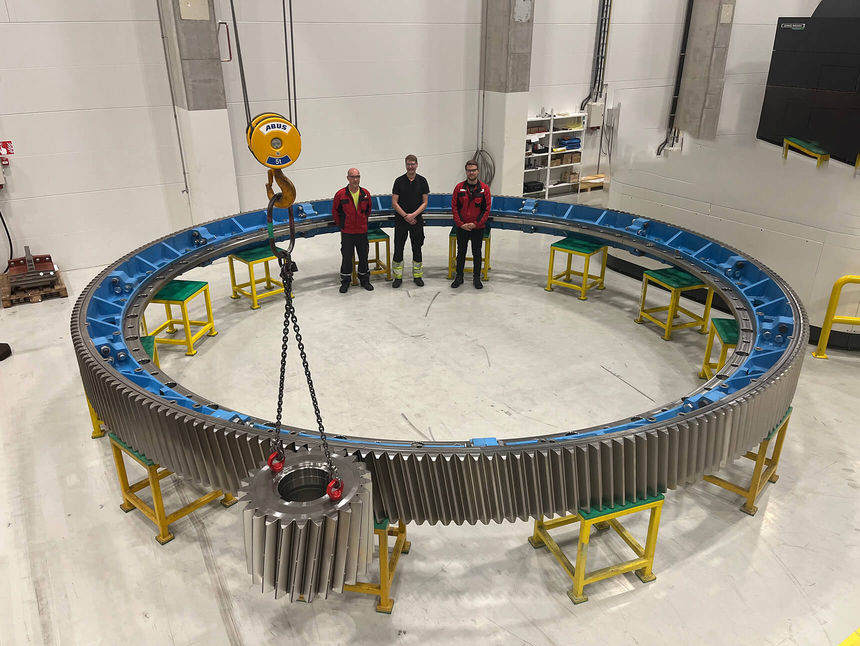David Brown Santasalo Expands Carbon Footprint Products Reporting to Girth Gears
As a part of David Brown Santasalo’s (DB Santasalo) ongoing commitment to the Science Based Targets initiative (SBTi), the global gear manufacturer introduced “Carbon Footprint of Products (CFP) Cradle to Gate CO2 equivalent” reporting for all their mining products in early 2022. Since that time, they have introduced the CFP Cradle to Gate CO2eq for their segmented girth gear range of products.
In 2021, David Brown Santasalo was one of the first gearbox manufacturers to commit to the Science Based Targets initiative (SBTi). Their SBTi commitments include reducing absolute scope 1 and 2 GHG emissions by 53.9 percent by 2032 from a 2021 base year. Additionally, 67 percent of DB Santasalo suppliers by emissions covering purchased goods and services will have science-based targets by 2027. DB Santasalo further commits that 70 percent of its customers by emissions covering use of sold products, will have science based targets by 2027. Their targets were submitted for official evaluation by the SBTi Validation Team and following a rigorous review against the SBTi science-based criteria, DB Santasalo’s targets were officially approved.
The initial project calculated the Carbon Footprint of Products (Cradle to Gate CO2eq) of all their mining products, manufactured in the purpose-built, energy efficient factory in Jyväskylä, Finland. This project has enabled DB Santasalo to develop a better understanding of the Scope 3 inventory of their value chain, in line with their SBTi commitments.
In order to build on this knowledge, DBS engineering specialists identified a need to screen the greenhouse gas emissions associated with their multi-segmented ring gears and develop a simple tool for emission calculation. In this way DBS engineers could evaluate the impact of varying supplier and distribution scenarios on greenhouse gas emissions.
This study, undertaken in accordance with ISO14067, focused on three DB Santasalo girth gear products, comprising one spring mounted and two flange mounted products. The system boundary was defined as cradle-to-gate + distribution, ensuring that the emissions profile was clearly understood across the life-cycle phases including raw material supply, transport, manufacturing processes and onward distribution to the customer. The manufacturing phases included the sub-contracting foundry and heat treatment phases, together with the DBS machining, painting and assembly. Use phase and end of life phase were excluded from the study.
The carbon footprint calculation tool analyzed all inputs and outputs including energy consumption in manufacturing, transport, packaging and ancillary materials, water consumption and waste generated. The results were presented as kg CO2eq/per 1 kg of product, per life cycle phase, to understand the varying impacts on emissions of each phase. The kg CO2eq was then multiplied by the product mass to provide the total carbon footprint of each of the products once manufactured and delivered to the customer.
It was identified that the greatest proportion of emissions are associated with the foundry production processes due to the energy intensive nature of the industry. The second largest element of climate impact was the raw material supply. The transport element of both raw materials to manufacturing and that of the finished product to customer was limited. Emissions associated with DBS machining and assembly were also minimal, primarily because of the Jyväsklyä facility benefiting from hydro-electric power and district heating.




